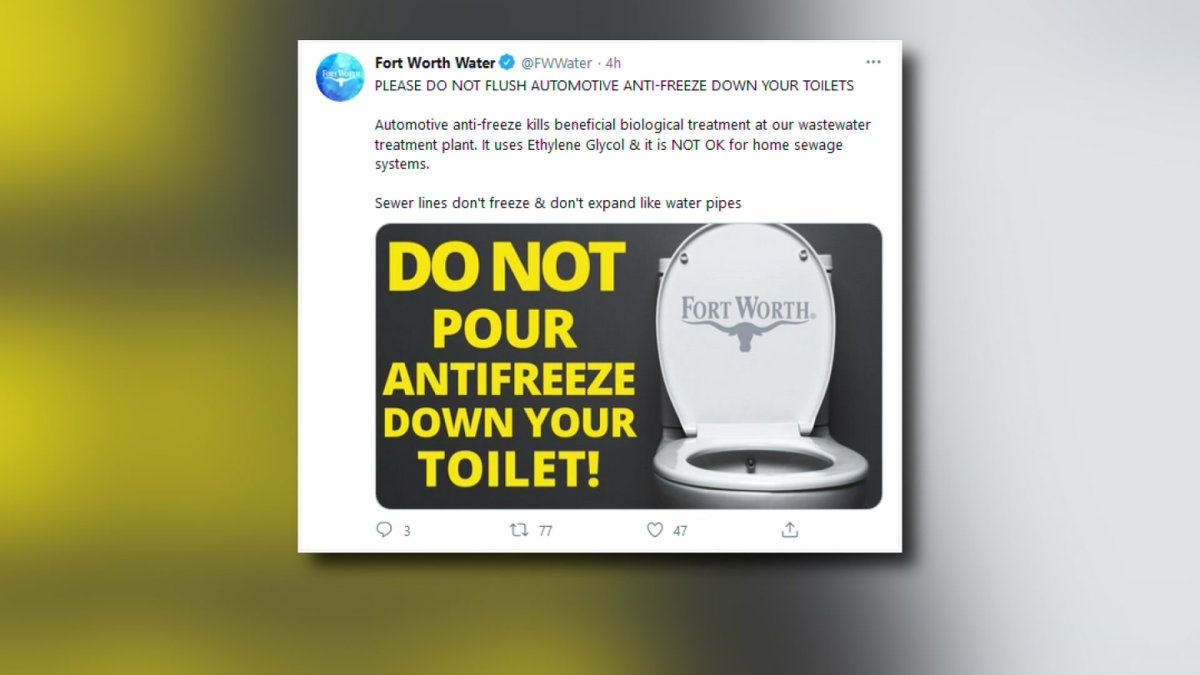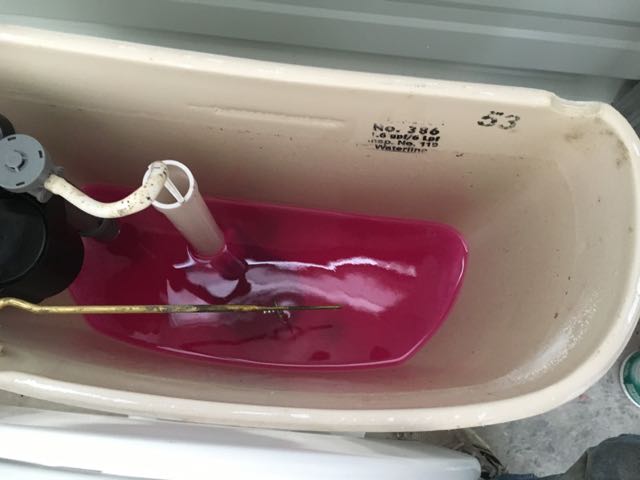Have you ever wondered if putting antifreeze in your toilet is a safe practice? You’re not alone.
Many homeowners are curious about this unconventional method, especially when trying to prevent frozen pipes during the harsh winter months. But before you reach for that bottle of antifreeze, it’s crucial to understand the potential risks and benefits involved. This article will delve into the safety concerns surrounding the use of antifreeze in toilets, helping you make an informed decision for your home.
Stay with us as we uncover the truth behind this intriguing question and explore alternative solutions that might better suit your needs. Your toilet—and your peace of mind—are worth it.
Antifreeze Basics
Antifreeze is a liquid that keeps engines from freezing. It’s used in cars, but can it be used in toilets? Understanding antifreeze helps decide if it’s safe for plumbing. Learn more about its types and uses.
What Is Antifreeze?
Antifreeze is a mixture that lowers the freezing point of water. It contains chemicals like ethylene glycol or propylene glycol. These ingredients prevent ice formation in cold weather.
By stopping water from freezing, antifreeze protects engines. It maintains fluidity even in extreme cold. This ensures parts function properly without damage.
Types Of Antifreeze
There are two main types: ethylene glycol and propylene glycol. Ethylene glycol is common in vehicles. It’s effective but poisonous if ingested.
Propylene glycol is less toxic. It’s often used in food and cosmetics. Both types work to prevent freezing but differ in safety levels.
Common Uses Of Antifreeze
Antifreeze is mainly used in car engines. It keeps the radiator from freezing in winter. It’s also used in HVAC systems to prevent pipe damage.
In some areas, people use antifreeze for plumbing during cold months. They pour it into toilets to stop water lines from freezing. Understanding these uses helps determine if antifreeze is suitable for toilets.

Credit: www.nbcdfw.com
Antifreeze In Plumbing Systems
Antifreeze can prevent pipes from freezing in cold weather. Safe for toilets, it must be non-toxic, like propylene glycol. Proper use protects pipes without harming health or environment.
Antifreeze in plumbing systems is a topic that often raises eyebrows and questions. You might wonder if it’s safe or even necessary. While many people associate antifreeze with cars, it can play a role in preventing plumbing disasters, especially in cold climates. Let’s dig into the specifics of using antifreeze in toilets.Why Use Antifreeze In Toilets?
Imagine you’re heading to your vacation home during winter, only to find your toilet cracked from freezing temperatures. Using antifreeze can prevent such scenarios. It’s mainly used to safeguard toilets in unheated properties during cold months. This simple step can save you from costly repairs by stopping the water in your toilet from freezing and expanding.Potential Benefits
Antifreeze in toilets isn’t just about preventing damage. It provides peace of mind. You can leave your property for extended periods without worrying about plumbing issues. Additionally, if you use RV or non-toxic antifreeze, you ensure safety for the environment and your plumbing system. This is crucial if you’re environmentally conscious or have pets that might come into contact with the water.Risks And Concerns
However, not all antifreeze products are created equal. Using automotive antifreeze in toilets poses health risks due to its toxic nature. It’s essential to choose the right type to avoid potential hazards. Even with non-toxic options, there might be environmental concerns if the antifreeze is not disposed of properly. Always read labels and follow guidelines to ensure safe usage.So, is antifreeze the right choice for your plumbing system? Consider the climate, the type of antifreeze, and your specific needs. Have you ever faced plumbing issues due to freezing? Share your experiences and insights in the comments! Your input could help others make informed decisions.Safety Considerations
Putting antifreeze in toilets is a topic with many safety concerns. While it might seem like a quick fix during winter, there are risks involved. Understanding these risks is important for safety and health. This section explores the environmental impact, health hazards, and legal regulations.
Environmental Impact
Antifreeze can harm the environment. When flushed, it enters the sewer system. It might reach local water sources. Contaminated water affects wildlife and plants. Protecting the environment is crucial. Always consider eco-friendly options.
Health Hazards
Antifreeze is toxic. It contains chemicals like ethylene glycol. These chemicals can be dangerous. They pose risks if ingested or inhaled. Proper ventilation is important. Always read product labels carefully. Use protective gear when necessary.
Legal Regulations
Local laws may restrict antifreeze disposal. Some places have strict rules. Violating these rules can lead to fines. Always check local regulations before use. Compliance is important for safety. Following the law avoids penalties.

Credit: greatescapefarms.com
Alternatives To Antifreeze
When winter temperatures drop, keeping your plumbing safe from freezing becomes a priority. You might wonder about using antifreeze in toilets to prevent damage, but there are safer alternatives to consider. These alternatives not only protect your plumbing but also keep your home environment safe.
Natural Solutions
Have you ever thought about using salt? Adding salt to the toilet bowl can lower the freezing point of water. This simple method can be surprisingly effective in mild winter conditions.
Another natural solution is vinegar. It’s not just for salads! Pouring vinegar into the toilet can help prevent freezing. Plus, it leaves your toilet cleaner and fresher.
Commercial Products
Commercial plumbing antifreeze is designed specifically for toilets and other plumbing fixtures. Unlike automotive antifreeze, these products are non-toxic and safe for home use.
Brands like Camco and Peak offer plumbing antifreeze that you can find in most hardware stores. Look for products labeled “RV antifreeze” as they are environmentally friendly.
Diy Methods
Have you ever tried insulating your pipes? Using pipe insulation can keep your pipes warm and prevent freezing. It’s an easy DIY project that requires minimal tools.
Another effective DIY method is to use a space heater. Placing a heater in your bathroom can keep the ambient temperature high enough to prevent freezing. Just make sure it’s safe and away from water sources.
Why not try a combination of these methods? By mixing and matching solutions, you can find the perfect strategy to protect your toilet without relying on toxic antifreeze. What’s your go-to method for winterizing your plumbing?
Steps For Safe Use
Using antifreeze in toilets can prevent freezing in cold weather. Ensure it’s non-toxic and safe for plumbing. Follow the product instructions carefully for proper use.
Thinking about using antifreeze in your toilet can spark questions about safety and effectiveness. While it might sound unusual, this practice is common in winterizing homes, cabins, or RVs. With a few careful steps, you can ensure that this task is done safely and efficiently. Here’s how you can handle it, step by step.Preparation Guidelines
Before you start, gather all necessary materials. You’ll need a non-toxic RV antifreeze, a pair of gloves, a bucket, and a sponge. It’s important to choose RV antifreeze because it’s specifically designed for plumbing systems and is less harmful than the automotive kind.Make sure your toilet is clean and flushed. This reduces the risk of contamination and ensures the antifreeze works effectively. If you’ve ever had to deal with a frozen toilet, you know the importance of this step.Application Tips
Wearing gloves, pour about a gallon of the RV antifreeze into the toilet bowl. This amount is usually sufficient to prevent freezing in most situations. You might be wondering why not just flush it, but it’s crucial to let it sit in the bowl to protect from freezing.Use a sponge to spread the antifreeze around the inside of the bowl. This ensures complete coverage and helps protect all parts that could be exposed to cold temperatures. When I first did this, I missed a spot, and it froze—lesson learned.Post-application Checks
After applying the antifreeze, check for any leaks or drips around the toilet base. These can cause issues if not addressed promptly. If you spot any, tighten the bolts or call a professional.Consider marking the toilet with a sign indicating the antifreeze application. This prevents accidental flushing, which could waste your efforts. Have you ever flushed a toilet out of habit? A simple sign can save you from that mistake.Finally, revisit the toilet periodically, especially during extreme cold spells, to ensure no freezing has occurred. This proactive approach can save you from unexpected repairs.These straightforward steps can help you use antifreeze safely in your toilet, ensuring your plumbing system is well-protected during the colder months. Is there a step you’re unsure about? Reach out and share your experiences or concerns in the comments below.Expert Opinions
Understanding whether antifreeze is safe for toilets requires expert insights. Professionals in various fields offer different perspectives on this practice. Each expert provides valuable information to guide your decision.
Plumbing Professionals
Plumbers generally advise against using antifreeze in toilets. They highlight potential plumbing issues. Antifreeze can damage seals and gaskets. It might also affect the porcelain over time. Plumbers suggest other methods for winterizing toilets. These methods are safer and more effective.
Environmental Experts
Environmentalists express concern about antifreeze in toilets. Antifreeze contains harmful chemicals. These can seep into groundwater. This can pose a threat to wildlife and ecosystems. Experts recommend eco-friendly alternatives. These reduce environmental risks and maintain safety.
Consumer Reviews
Consumers share mixed experiences with antifreeze in toilets. Some report no issues and find it effective. Others mention problems like leaks and damage. Reading reviews can provide insight into real-world experiences. Learning from others helps make informed decisions.

Credit: www.reddit.com
Frequently Asked Questions
Is Antifreeze Safe For Toilet Use?
Antifreeze can damage plumbing. It’s not recommended for toilets. Use alternatives like RV antifreeze for safety.
Can Antifreeze Prevent Toilet Freezing?
Yes, but choose RV antifreeze. It’s designed for plumbing and safer than regular antifreeze.
What Are Antifreeze Alternatives For Toilets?
Consider RV antifreeze. It’s safe for plumbing. Or use insulation methods to protect toilets from freezing.
Does Antifreeze Harm Septic Systems?
Yes, regular antifreeze can harm septic systems. Use RV antifreeze, which is biodegradable and safer.
How To Winterize Toilets Without Antifreeze?
Drain the toilet tank and bowl. Insulate pipes. Use RV antifreeze if needed for plumbing safety.
Conclusion
Using antifreeze in toilets poses several risks. It can harm plumbing and the environment. Some alternatives exist, like insulating pipes or using toilet-safe additives. These options protect your plumbing without chemical risks. Always research before using any product in your home.
Safety for your family and the environment matters. If unsure, consult a professional plumber. They can offer guidance and safe solutions. Keep your home and its systems running smoothly. Your peace of mind is important. Consider all factors before acting.
Choose wisely for a safe home environment.
